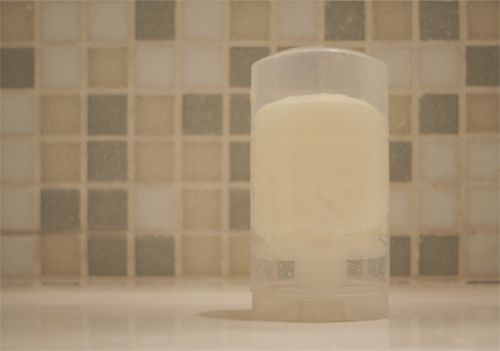homemade deodorant

Making your own homemade deodorant can be a fun and natural alternative to store-bought deodorants. Here’s a basic recipe for a homemade deodorant that’s simple to make and uses common ingredients. This recipe is for a solid deodorant, and you can store it in an empty deodorant container or a small jar.
Ingredients:
- 3 tablespoons coconut oil
- 2 tablespoons shea butter or cocoa butter
- 2 tablespoons baking soda
- 2 tablespoons cornstarch or arrowroot powder
- 10-20 drops of essential oil (e.g., lavender, tea tree, or lemon) for fragrance (optional)
Instructions:
- Prepare Your Work Area: Ensure your work area is clean and sterilized, and have all your ingredients and utensils ready.
- Melt the Oils and Butters:
- In a heat-resistant container or double boiler, melt the coconut oil and shea butter (or cocoa butter) over low heat until they are fully liquefied.
- Stir to combine.
- Add Dry Ingredients:
- Remove the mixture from heat.
- Stir in the baking soda and cornstarch (or arrowroot powder) until you have a smooth, creamy mixture.
- Add Essential Oils:
- If desired, add 10-20 drops of your chosen essential oil for fragrance. Essential oils like lavender, tea tree, or lemon work well.
- Mix well to distribute the fragrance evenly.
- Pour into Container:
- Carefully pour the mixture into a clean and empty deodorant container or a small jar.
- Allow it to cool and solidify. You can place it in the refrigerator to speed up the process.
- Use Your Homemade Deodorant:
- Apply the deodorant as you would with any other solid deodorant. Simply swipe a small amount on your underarms.
This homemade deodorant works well for many people and is free from many of the potentially harmful chemicals found in some commercial deodorants. However, it’s essential to note that everyone’s skin is different, and what works for one person may not work for another. Some people may develop skin sensitivity or irritation, especially if they are sensitive to baking soda. If you have any concerns about how your skin may react to this homemade deodorant, consider doing a patch test before regular use.
Feel free to adjust the recipe to suit your preferences, such as experimenting with different essential oils for fragrance or tweaking the proportions of the ingredients until you find the right balance for your needs.